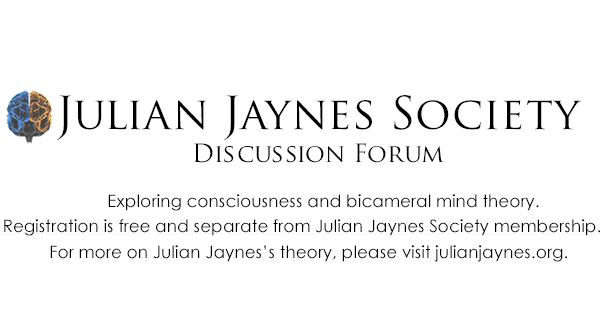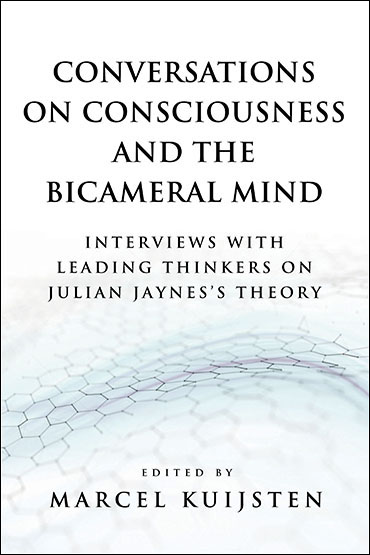The word “consciousness” imparts a mystique that makes otherwise cautious and careful researchers jump to unwarranted conclusions. For many consciousness is a topic of mystery and fascination. Given its promiscuous mention in academic and nonacademic writings, consciousness, for not a few, is like the cup—the Holy Grail—Jesus was believed to have drunk from during his last meal with his disciples. Neurologists, psychologists, philosophers of mind, popular science journalists, and assorted thinkers with a strong mystical bent are all in pursuit of this sacred relic of psychology. Even some physicists are in on this great quest (e.g., quantum mysticism).
No matter how committed to a natural scientific methodology a researcher might be, they will presumably still acknowledge the role of “software,” i.e., what is fed into the machinery of the neurological apparatus via enculturation, in the configuring of consciousness. Nevertheless, the type of research that attracts funding, promotion, public attention, and prestige is most definitely of the hard science “neuro” variety; the result is that studies of mind are dominated by the neurocentric approach. This is understandable, as the academic establishment and government funding agencies place great faith in the pillars of the hard sciences: Materialism, measurement, and quantifying methodologies (rather than intentions, meaning, and qualitative studies). The consequence is that consciousness is primarily understood as a “hardware” problem, i.e., what we are born with, the internal springs of mental machinery, the evolutionarily baked-in features. Such a perspective greatly distorts the agenda of research projects subsumed under “consciousness studies” (or the nature of psyche in general). Ignoring the “software” aspects of consciousness—what we acquire through socialization, what is learned, what is historically variable—prevents psychology from making progress.
The Tyranny of the Neuroscientific Perspective
As a relevant example, consider Andrea Eugenio Cavanna and Andrea Nani’s Consciousness: Theories of Neuroscience and Philosophy of Mind (Springer, 2014). Divided into 30 chapters that each treat an important thinker in consciousness studies, the volume is a useful and handy collection (though a perusal through the book gives the impression that consciousness is being used too loosely and interchangeably with other psychological concepts that need to be disentangled). A simple examination of relevant words shows how what might be called the sociohistorical approach is not seriously entertained in this book. Two types of terms were looked at, those that describe: (1) “hardware” and (2) “software.” The latter includes “neuro” terms = 403; “brain” = 388; “bio” terms = 48; “physical” = 261. “Software” terms include “culture/cultural” = 12; “social/society” = 6; history/historical” = 11; “environment/environmental” = 26. If the “software” and “hardware” terms are added (55 and 1100, respectively), we arrive at a total of 1155. “Software” terms are only 4.67 percent of the total (as much as possible, I only counted a term if its use was directly pertinent to consciousness or psyche; appearances of a term in the title, bibliography, and index were not counted). To be fair, “neuroscience” is in the title (but then again so is “philosophy”) so we would not expect such a book to have many “software” words. But still, the discrepancy is striking, and whether a neuroscientific perspective is adopted or not, we should still question why the historico-cultural facets of consciousness are ignored by so many thinkers.
The chapter devoted to Jaynesian psychology in Cavanna and Nani’s volume does not clearly highlight the major thrust of Jaynes’s argument: That cultural changes led to the emergence of consciousness (though language, a key dimension of culture, is discussed, a Jaynesian analysis takes culture to be more than just linguistic representation). Indeed, “cultural” is only mentioned once in the chapter: “At best, Jaynes’ theory could help explain some cultural (software) rather than structural (hardware) developments of conscious processes” (p. 143). The very premise of this sentence seems to be that anything “cultural” is secondary to the “structural” (“more real”?) aspect of consciousness. And it is very debatable if “thus far little support for the bicameral architecture of the preconscious mind” has been presented in the relevant literature (p. 143). Moreover, like other commentators on Jaynes, the authors pay much attention to The Iliad, as if this were Jaynes’s primary source of evidence. Most importantly, the chapter does not distinguish between Jaynes’s hypotheses about the “neurology” of bicamerality versus the “psychology” of bicamerality. But such a failing is to be expected if one assumes that mental activity can be reduced to the brain, while the socially-acquired facets of mentality can be overlooked.
Consciousness Is the Holy Grail of Neuroscience: Why We Still Misunderstand a Crucial Concept in Psychology
Posts by anthropologist, mental health counselor, and author Brian J. McVeigh on Julian Jaynes's theory and related topics.
Return to “Brian J. McVeigh's Random Thoughts”
Jump to
- JJS Forum
- ↳ General Discussion
- ↳ News Items Related to Jaynes's Theory
- ↳ Book Discussion: The Origin of Consciousness and Julian Jaynes Society Publications
- ↳ Myths, Misconceptions, and Fact Checks About Julian Jaynes's Theory
- ↳ Brian J. McVeigh's Random Thoughts
- ↳ Julian Jaynes
- ↳ Conferences, Events, and Local Discussion Groups
- ↳ Lecture Discussion
- ↳ Interview and Q&A Discussion
- ↳ 1.0. Hypothesis One: Consciousness Based On Language
- ↳ 1.01. Hypothesis One: Consciousness Based On Language | Subtopic: Consciousness & Dreams
- ↳ 1.02. Hypothesis One: Consciousness Based On Language | Subtopic: Consciousness in Children
- ↳ 1.03. Hypothesis One: Consciousness Based On Language | Subtopic: Consciousness and AI
- ↳ 2.0. Hypothesis Two: The Bicameral Mind
- ↳ 2.1. Hypothesis Two: The Bicameral Mind | Subtopic: Auditory Hallucinations in Normal Adults
- ↳ 2.2. Hypothesis Two: The Bicameral Mind | Subtopic: Hallucinations & Imaginary Companions in Children
- ↳ 2.3. Hypothesis Two: The Bicameral Mind | Subtopic: Hypnosis, Possession & Altered States of Consciousness
- ↳ 2.4. Hypothesis Two: The Bicameral Mind | Subtopic: Religion & the Bicameral Mind
- ↳ 2.5. Hypothesis Two: The Bicameral Mind | Subtopic: Schizophrenia
- ↳ 2.6. Hypothesis Two: The Bicameral Mind | Subtopic: The Mentality of Pre-Literate & Pre-Modern Peoples
- ↳ 3.0. Hypothesis Three: Dating the Development of Consciousness
- ↳ 4.0. Hypothesis Four: Jaynes's Neurological Model for the Bicameral Mind
- ↳ The Bicameral Mind in Fiction, Film & Popular Culture
- ↳ Information for Students


